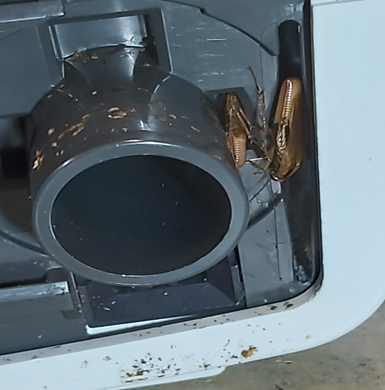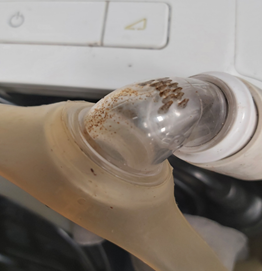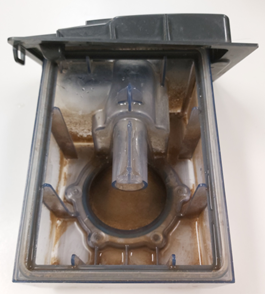‘Filthy’ machines are not uncommon, with healthcare workers finding bacteria, fungus and even bugs in their patients’ respiratory devices.
A poorly maintained CPAP machine may be to blame for the death of a 44-year-old woman from lung abscess complications, according to the Victorian Coroner.
Melissa Cunningham had sleep apnoea and Down’s syndrome, and relied on her carers to regularly clean her CPAP machine.
“It is possible that Melissa’s death may have been prevented if the CPAP machine had been adequately cleaned,” the Coroner reported.
The Coroner attributed her cause of death to complications of an abscess in the right lung, with her obesity and Down’s Syndrome as contributing factors. The abscess followed a bout of pneumonia, which the coroner noted could have been caused by bacteria spread via the blood stream or from aspiration of upper airways secretions or gastric content.
“Melissa was found to have a significantly elevated C-reactive protein (181mg/L), indicative of severe lung infection,” according to the report.
“As Melissa’s CPAP machine was not being cleaned regularly as required, it is possible the lung abscess may have been caused or contributed to by bacteria and/or mould growth in Melissa’s CPAP machine.”

Respiratory sleep specialist Dr Jeffrey Bowden warned that dirty CPAP machines may contribute to a patient’s respiratory infection.
“Sometimes you may have patients who have recurrent infections related to either not cleaning the machine or using rainwater or other things.
“We’re used to thinking of CPAP machines as very clean and well maintained as they are in hospitals and other services but, long term, people may not be as careful with them as they should be.”
There are several difficulties with keeping CPAP, BiPAP and ventilators clean. Many machines have humidifiers to increase the air moisture and make it more comfortable for the patient.

The combination of warmth and humidity favours fungal and bacterial growth, Dr Bowden said.
“If you’ve got warmth and humidity, and the secretions, flakes of skin and other debris which builds up on the CPAP mask, then potentially it’s an ideal medium for cultural growth of microorganisms,” he said.
Katherine Bassett, a South Australian nurse practitioner candidate, said it was “not as uncommon as you’d think” to see CPAP machines in a “filthy” state.
“If you’ve got warmth and humidity, and the secretions, flakes of skin and other debris which builds up on the CPAP mask, then potentially it’s an ideal medium for cultural growth of microorganisms.”
Dr Jeffrey Bowden
“It’s particularly an issue for people in residential supported living situations that are very elderly or intellectually impaired,” Ms Bassett said. “They’re not given the support that they need to maintain the hygiene of the machines.”
Because the machines were not routinely swabbed in homes or care facilities, Ms Bassett said it was difficult to prove that people’s infections were caused by dirty CPAPs.
But she said she regularly came across situations where that was highly probable.

“I had a gentleman who was using rainwater and he was getting recurrent sinus infections,” Ms Bassett recalled. “Every time I told him not to use rainwater in the chamber. Finally, he took my advice and his sinus infection disappeared.”
Dr Bowden said that patients sometimes wrongly believed that rainwater was cleaner but did not realise it could instead contain microorganisms. Because humidifiers did not sterilise water, this put patients at risk.
Insect infestations were also a big problem in some parts of the country, Ms Bassett warned.
“The machines are warm environments, and the bugs just climb into them.”
But patient and carers could take steps to protect against these risks with regular cleaning, such as dusting, wiping and drying the parts of the machine daily, and more thorough washing using distilled water, mild detergent and vinegar each week.
“The machines are warm environments, and the bugs just climb into them.”
Katherine Bassett
Dr Bowden warned that not all patients may be aware of how important this was or were capable of doing it.
“If you don’t actually see the machine and see the mask, then you may not realise how contaminated things are,” he said.

Infection isn’t the only risk. Dr Bowden has also seen broken machines held together with duct tape or staples, which reduces how well the device functions. Machines also wear out and need to be replaced every couple of years.
“There are issues of cleanliness, but also the fit and general reliability of the mask as well,” he said. “Part of good clinical practice is to review the CPAP machine and ensure the mask condition and fit.”
Note: Images above are examples of poorly maintained machines and are not of the one used by Melissa Cunningham


